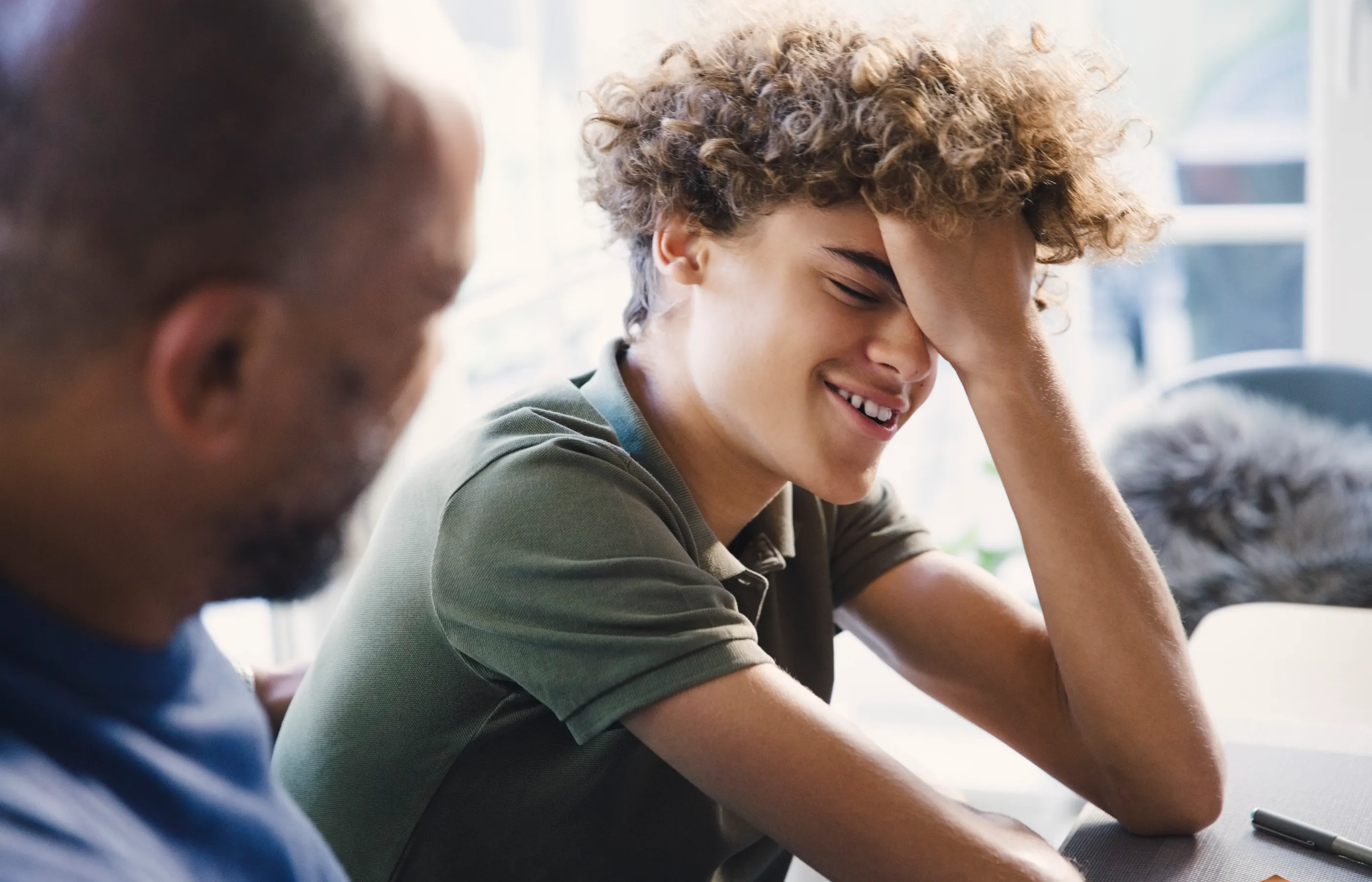Puberty & Development
Understanding the stages of puberty
| Girls | Boys |
When your teen is going through puberty, they'll likely experience a range of emotions along with some surprising physical changes. Our pediatric specialists are here to help understand the changes taking place during this stage, such as a girl's menstruation cycle or body changes for boys. They'll work with your child to make the developmental journey as smooth as possible.
What if my child isn't developing?
When puberty is delayed, your child won't show any visible signs of physical change typically associated with other kids their age. Contact your pediatric provider if your teen has reached 14 years and shows no signs of entering puberty. We’ll examine them to see if there are specific reasons for their late development and ways to help.

When does puberty start for girls?
Puberty can begin for adolescents at different ages. The first signs of puberty in a girl usually start by age 11, and boys typically hit puberty around 12 years. However, some children develop as early as 8 years old, while late bloomers may not hit puberty until 15 years of age.
Stages of puberty for girls
When girls enter puberty, their bodies change how they distribute and store fats. You may notice alterations in your body’s curves, including developing breasts. During puberty, your body is preparing for the menstrual cycle. Girls often get their first period around two years after first showing signs of puberty. Growth spurts are also common during this time.
Understanding the menstruation cycle
The menstruation cycle is the monthly process a woman’s body goes through to prepare for pregnancy. There are two ovaries in a woman’s body containing millions of tiny eggs. Once a young girl’s body reaches puberty, her ovaries begin releasing an egg each month. It flows down the fallopian tube and attaches to the tissue of the uterus wall. This process is called ovulation.
If the egg isn’t fertilized within 24 hours, it dissolves. The uterus discharges the tissue and blood that is no longer necessary to support a pregnancy. The blood flows out of the vagina for the next few days. The cycle of menstruation repeats each month until menopause.
Understanding how pregnancy happens
The menstrual cycle signals when a woman can become pregnant. Fertilization with male sperm happens during a specific window of the menstruation cycle. If a sexually mature female and male engage in sex while she is ovulating, fertilization may occur. During pregnancy, the menstrual cycle ceases until after the pregnancy. If fertilization doesn't happen, the normal cycle for menstruation continues by shedding the uterine lining and starting over.

Your first gynecological appointment
As you go through puberty, it’s a good idea to consider meeting with a gynecologist. The American College of Obstetricians and Gynecologists recommends that girls have their first gynecological appointment between the ages of 13 and 15 years. Our gynecologists work with hundreds of teens yearly, offering support and guidance in a comfortable environment. You’ll receive expert care for all of your reproductive needs, both physical and emotional. Your provider also will be able to spot emerging medical problems.
What to expect at the appointment
First and early gynecological visits are often more like a regular physical. Your gynecologist may check your weight, height and blood pressure and discuss the changes you’re experiencing. Pelvic exams and regular pap screenings will typically occur when you become sexually active.
When symptoms require a gynecologist
The American College of Obstetricians & Gynecologists offers recommendations on when teenage girls should consider seeing a gynecologist:
- You haven't started your period by age 15.
- You’re experiencing problems with your period.
- You’re struggling with puberty in general.
- You’re sexually active or thinking of it.
- You’re questioning your gender identity.
Other times to consider making an appointment with a gynecologist include if you are experiencing pain in or around the pelvic area or have unusual bleeding.
Managing premenstrual syndrome (PMS)

How does puberty affect boys?
The onset of puberty for boys begins with physical changes, including body hair growth and the enlargement of genitalia. Understanding the changes they are going through can help make the process less uncomfortable and confusing for them.
Stages of puberty for boys
As boys enter puberty, they begin growing armpit and pubic hair. You'll experience growth spurts, commonly growing around two to four inches yearly. The testes and scrotum begin to enlarge first, followed by penis growth. It’s common to experience new feelings or desires. Some young men ejaculate during sleep, which also is a normal part of puberty in boys. During this time, your voice will deepen, often alternating between high and low pitches.
Emotional changes during puberty
Boys often experience significant emotional changes during puberty. The increase in testosterone can contribute to heightened aggression and emotional outbursts. If you’re experiencing difficulty dealing with emotions, reach out to your pediatrician. We’ll help you understand the changes and offer ways to cope with the strong emotions you’re feeling.
